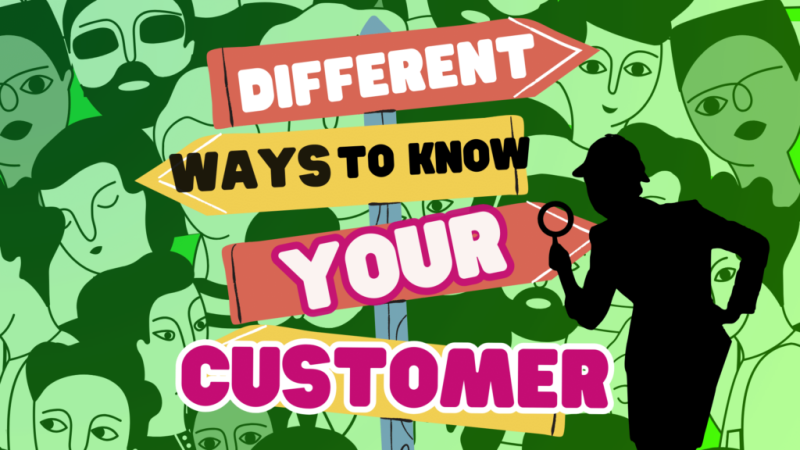Interestingly, so many organizations have revenue or profit as their Product Goals as well as Strategic Goals. Some organizations do not consider using Product Goals at all. Or they are not aware of this need.
What about your organization or product? Do you have a Product or Strategic Goal? If yes, does it revenue-oriented?
From my perspective and personal experience working with companies, I would provide a short
answer to this question: Is revenue a good Product Goal? – yes and no. But this quick answer does
not help you; therefore, I need to elaborate more on this topic. There are no shortcuts.
One crucial piece of information must be known before I go deeper. Goals should be measurable.
The goal of “Increase revenue by 15%” sounds good from this perspective. However, is it an effective
approach?
Scrum Teams should be focused on one goal at a time to avoid confusion and context switching.
Shallow, short-term approach
Commercial organizations exist to earn money, increase market share and do business. That’s
undeniable.
Having a goal, only revenue/profit-oriented for product teams might be too shallow. It means that
customers/users are not part of the product journey, aren’t they? Some companies just ignore them
while setting up goals.
Who is making a profit for the organization? => Customers and users.
How likely your organization will reach its revenue goal without users and/or customers? => Very
unlikely. 2
Why users/customers should be interested in your product/service if they are unsatisfied or
nobody cares about their happiness? => As a customer, why should I buy/subscribe to your product?
Because you have a financial goal?
What would team engagement be if they do not know what customers/users need? 3 => I found
Scrum Teams to be more engaged if they had clear, customer-oriented goals. If they do understand
what customers want and need.
I called the approach on having revenue only related as short-term and shallow. It might not lead to
the intended results. Opposite, it may lead to mindless adding features (whether needed or not).
Sometimes I observe even an “aggressive delivery” (do more, faster, we need to fulfill our financial
goal!). Why are these features required if they are never validated with customers/users and their
real needs and satisfaction gaps? Right, I am harsh here to wake up some decision-maker just to
reflect.
This observation is based on my cooperation with at least 30 companies over the last years.

A long-term, effective approach
A relatively better approach is combining revenue and customers in goals. You may also consider
having goals only customer-oriented. Based on shared research in end notes, the more outcomes you
deliver to customers, the more revenue you have. Remember about the rule: one goal at any given
time (focus!) and measurable.
How to get there?



or related metrics. Try to constantly measure gaps, potential, opportunities,
recommendations, retention, customer usage, and everything else that may help you make
better decisions about the product).
Example:
Now, you listen to customers, run experiments, and talk to the Customer Support department. You
have noticed that customers/users’ recommendations have dropped recently. You look into their
satisfaction gap and discover they do not feel safe with your solution. Customers are not sure if their
data are secured and protected. Instead of staying with your solution, they moved to your
competitors. It becomes evident that the goal will be security related.
It may look like this: In order to increase our customers feeling of being safe and their data are
protected by X %, we need to deliver [solution]. In that way, we can increase the number of
recommendations by X % and X % of retention, so revenue will increase by X % (you can use numbers
instead of percentages).
As you may observe, customers and their outcomes are in the first place. Revenue and other
company-related metrics are also included. Note that in this way, your teams will understand why
what they are doing is so important. They will understand customers’ needs/gaps.
Conclusion
Never forget about the customers and users. I advise putting them and their outcomes in each
Product Goal (ideally Strategic Goal as well). Obviously, you may include in it your company
objectives like revenue, market share, number of customers, etc. Revenue will come inevitably with
happy customers, so why don’t you delight them?
1 More about Product Goals: https://magdalenafirlit.com/the-product-goals-explained/
2 There are plenty of research showing the relationship between customer satisfaction and revenue. B2B study
https://www.emerald.com/insight/content/doi/10.1108/08876041111107032/full/html;
B2C: https://onlinelibrary.wiley.com/doi/abs/10.1111/j.1540-5915.2004.02671.x
From my study, please note that measuring only customer satisfaction is not enough. You need to go deeper
to customers’ needs, usage and existing gaps in their satisfaction and other metrics.
Insurance example: https://onlinelibrary.wiley.com/doi/abs/10.1111/j.1540-5915.2004.02671.x
3 Again, we can provide plenty of examples, you may have a look at the following
https://hbr.org/2008/02/leadership-that-focuses-on-the-1 and https://www.fibre2fashion.com/industry-
article/829/customer-focus-teams or https://www.helpscout.com/blog/customer-oriented/
4 For more about measuring value go here: https://magdalenafirlit.com/blog/ Especially, focus on Evidence-
Based Management.


